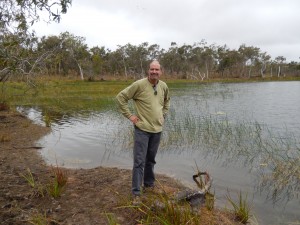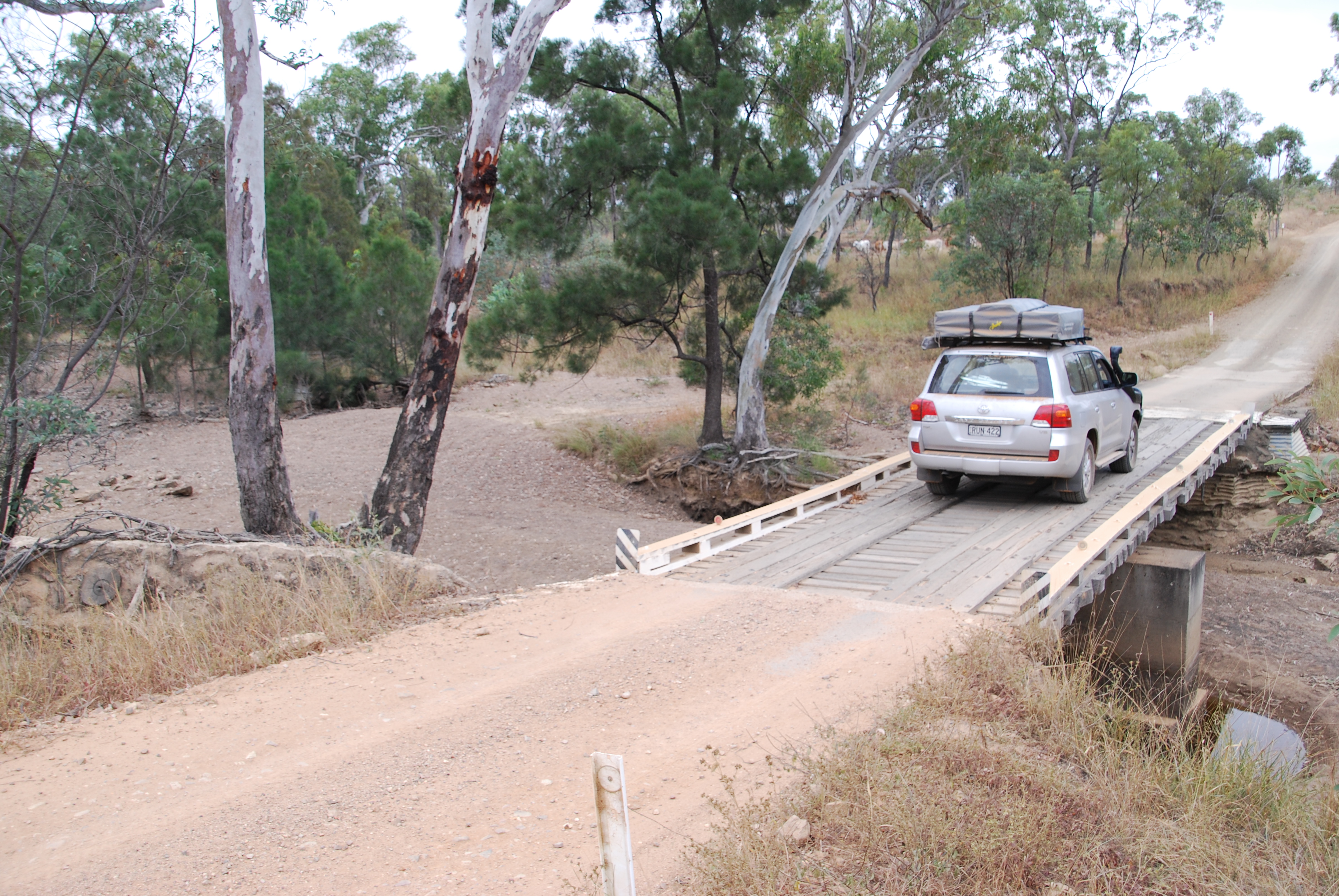It’s a big country!
Our days north through Queensland travelling on a series of the inland country roads reminded us of how huge Australia is. We constantly underestimated the progress we could make on a day of driving, despite our relatively early starts and willingness to do long hours in the mighty Cruiser. Of course we were delayed occasionally by taking photos of the beautiful scenery, stopping in community markets in small country towns and seeing a few of the sights along the way. Such is life on the road.
The sheer scope of this land defies measurement in normal terms. When you pass signs saying the next fuel is 260 km or a sign which says the next major city is 1,670 km away you know this is a big place. The countryside the first couple of days through inland Queensland featured the occasional fertile fields growing sorghum, sugar cane, sunflowers, cotton and a lot of hay. But these fields would always be interrupted with rolling hills of the very familiar Aussie bush – a huge variety of gums, some pines, various other sub-tropical trees and bushes, vast fields of grazing land with herds of cattle, the occasional farmer’s house with the tractors in the front yard andthe ubiquitous ute in the gravel drive.
We free camped off the main road at a place we called Twin Hills (we have named every campsite to help us remember them all) and in the early hours were woken by a chorus of tweets, kaws, chirps, warbles and hoots as the local birds celebrated the morning dawn. We moved north through Charter Towers, a friendly country town of 11,000 people with a proud mining history, and restocked our supplies before taking on some long lonely stretches of roads until we got to a place called Oasis Roadhouse.
In these remote parts of Queensland many points on the map are marked because they are stations (usually large stock-grazing ranches) or points where two roads cross and feature
multi-purpose roadhouses. There is no mobile reception or common luxuries at Oasis but we enjoyed a hot shower even if we had to go without a fire for the first time due to the strong winds.
Our plan the next day was to cut through the beautiful Atherton Tableland, a large swathe of land sometimes hitting 1,000 metres which is inland from the city of Cairns and is known for its beautiful mountains, high waterfalls and scenic vistas. Our maps showed some doable four wheel drive tracks so with our trusty Karen on the Sat Nav we proceeded into the deep bush.
First stop on the dirt mountain tracks was the historic mining town of Irvinetown but we pushed inward and upward, through the stunningly beautiful gum forests, thick with grass trees and good old Aussie scrub, up steep winding four wheel drive tracks, pushing the limits of our maps and Karen.
This short cut track through forgotten bush became more and more technical and the Land Cruiser was put through a strong test of its capabilities as the path wound up and down steep mountains and through deep ravines. We spent quite a bit of time walking the track, studying how to negotiate some of the deep washes, doing some maintenance on various tricky bits and slowly grinding our way up and down the mountains.

We passed many beautiful water holes along the track - and then saw them again after we had to turn around
This was great fun, a test of all parties, but eventually we came to a land slide that blocked the road with no way to pass it. Seriously bummed but with no options, and after two hours of very difficult four wheel driving, we had to repeat our tracks and find our way to the safer (and boring) bitumen. But we were very happy the Land Cruiser had performed like the true champion of its reputation, despite picking up a couple of marks through some of the most difficult passages. Such is life on the road.
We ended up camping north of Mareeba at an obscure place near Lusters Creek, a beautiful bush camp near a babbling brook where the huge paperbark gums protected us from the continuous strong winds and we enjoyed a great night amongst the giants.
The next day we pushed further north towards the historic town of Cooktown, stopping for nostalgia sake at the old pub called the Lion’s Den Hotel. We camped at this place in 2007 during our epic three vehicle expedition to the tip of Cape York and it was great fun to see the historic pub again and find our names on the ceiling that are now proudly part of the thousands of other names featured on its walls.
The remote settlement of Cooktown at the mouth of the Endeavour River is named after Captain James Cook who camped here for three months to repair his boat the Endeavour after scraping it on the Great Barrier Reef in the 1780s. The town has a seriously remote feel about it and we had lunch while we bought a few more items before heading northward. Our next milestone was to see our nephew James and his partner Keryn at the station they work at in the heart of Cape York but to get there we were going the long way, an extremely remote track up the coast through Aboriginal title land and some obscure national parks in one of the most forgotten parts of Australia. I hope this works!










